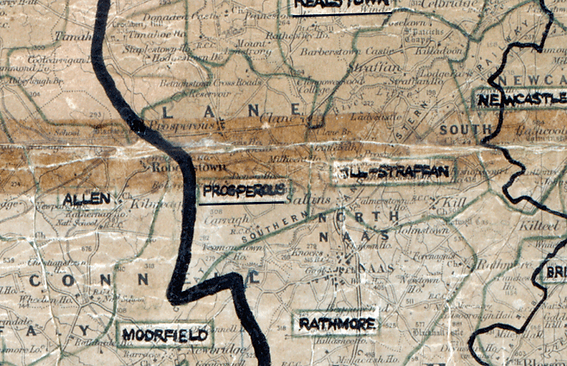

Prosperous Heritage
The Rural Electrification Scheme
How Prosperous Was Lit Up
ESB was established in 1927, at the time only 45,000 homes in Ireland had electricity – usually from a local authority or private electricity supplier.
Ireland’s network, which was constructed in 1929, was the first fully integrated national electricity service in the world.
By 1978, the Shannon Scheme (1929) and the Rural Electrification Scheme (1946) had connected over one million Irish homes and businesses to the ESB network.
The first pole in the first phase of rural electrification had gone up on November 5th, 1946, at Kilsallaghan, in north Co Dublin. The first lights of the scheme were switched on at Oldtown, Co Dublin, in January 1947. At the time more than 400,000 homes in rural Ireland had no electricity. The scheme was heavily subsidised, but, depending on the size of the premises, householders had to pay a connection fee, along with future bills, and to wire their homes before they were connected.

The first pole being erected at Kilsallaghan, Co Dublin, on November 5th, 1946. No such thing as machinery back then. It was all done by hand.
The project, carried out by the Electricity Supply Board, was enormous. The State was divided into 792 areas – roughly along parish boundaries, as the ESB wanted at least one local influencer in each area who could encourage people to sign up to get connected. Priests talked about the project from the pulpit, encouraging their parishioners to participate. Although it would never be economically viable to connect some sparsely populated areas, the more people who wanted a connection the sooner their area would be visited.
The approach in every district was the same. The ESB asked householders if they wanted to sign up for electricity, then held local information meetings. In the first long phase of electrification, which ran from 1946 to 1965, it was sometimes your hard luck if you wanted to be connected but your nearest neighbours did not. The ESB deemed it uneconomic to run lines to just one house. The areas with the highest take-up were first to be connected.

An E.S.B. domestic appliance door-to-door salesman demonstrating one of many products.
Note the gentleman with the newspaper showing no interest at all in what is going on. At the time it was mainly women who attended the showrooms in the bigger towns or dealt with the salesmen whenever they would come to town.
Once a community was connected, or about to be connected, the ESB held public demonstrations of household appliances; it also sold them: irons, kettles, vacuum cleaners, clocks,washing machines, boilers, stoves and so on. You could avail of different hire - purchase schemes for £40 and each scheme consisted of different household electrical equipment. A lot of this equipment was alien to a lot of people in rural Ireland back then so there were showrooms set up in big towns and cities or a travelling demonstration sales groups would visit some parishes around Ireland.

There was 1132 poles used from source to the finish of the project in the village in 1953. 93 kms of cable was used to wire up Prosperous which connected 250 premises.
Rural communities with working farms, bakeries and mills were a popular target for the E.S.B. and at the time. It was thought that electricity brought to these areas would kick - start a modern day industrial revolution of sorts and leave behind the old methods of farming and embrace the new and more productive methods through the use of electricity. Prosperous was seen as one of these places in 1951. Motorised milking machines were forecast to be in demand in Prosperous according to The REO News from April 1953.
Work commenced on setting up Prosperous for electricity in February of 1952 and work was complete in January on 1953. There was 1132 poles used from source to the finish of the project in the village. 93 kms of cable was used to wire up Prosperous which connected 250 premises thus bringing the village forward to a more modern age. At the time Prosperous was as an extensive dairying area and the E.S.B. felt there would be a high demand for motorised milking machines.

A copy of an engineers map showing where the main line would travel through the area before further lines were rolled to disperse electricity to the 250 premises.

The assessor's letter to E.S.B. recommending to give the go ahead and get Prosperous wired up for electricity for the first time. As you can see they did do their research!